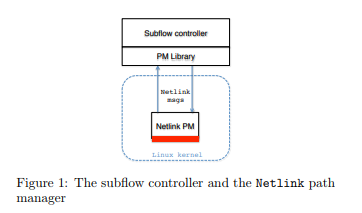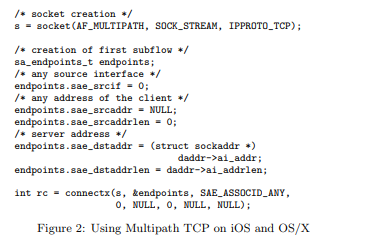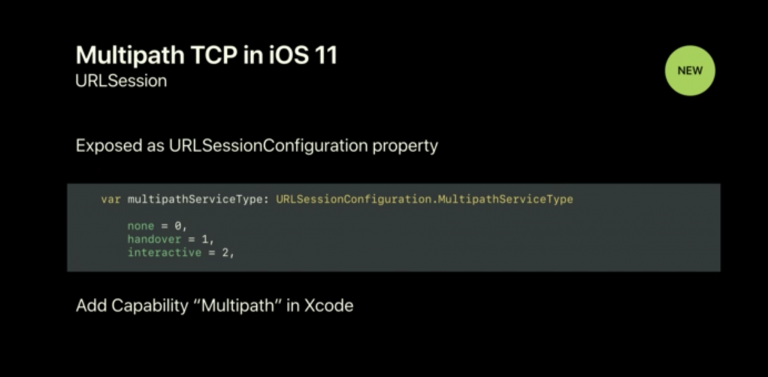Multipath TCP APIs
Shortly after the publication of RFC 6824, the IETF published RFC 6827. This RFC provides a first discussion of how a socket interface could be designed to support Multipath TCP. When RFC 6827 was published, none of the existing implementations included a socket API for Multipath TCP. The Linux implementation used the standard sockets with a few options and sysctls. This enabled Multipath TCP to be useable by any application, but without special means to control the utilisation of the subflows. This ability to support standard application remains one of the main advantages of this implementation. Once Multipath TCP has been added in the Linux kernel, all applications immediately benefit from its multipath capabilities.
However, there are some used cases where the applications know that they are using Multipath TCP and want to control some of its features such as the utilisation of the subflows of the packet scheduler. A first approach to provide this control was proposed in [HDB+15]. This solution exposes the Multipath TCP kernel API to user space applications through netlink messages.

Thanks to these messages, it is possible to design a userspace path manager librayr that control the utilisation of the subflows. This is important for use cases where one path is more costly than the other, e.g. on smartphones where the celullar interface is billed on a volume basis while the Wi-Fi interface is not metered. Several use cases and examples are described in [HDB+15].
A second possible approach is to extend the traditional socket API by using socket options that can be set or retrieved by the applications [HB16]. Six new socket options are proposed in this article and described later in draft-hesmans-mptcp-socket-03.

These socket options enable an application to control the creation and the removal of subflows during the lifetime of a Multipath TCP connection. Two use cases are described in this short paper : refreshing subflows on a regular basis and delaying the establishment of subflows. The patches that implement these socket options have been distributed on the mptcp-dev mailing list but not yet integrated in the official releases of the Multipath TCP implementation in the Linux kernel.
Apple has also defined a specific API to enable applications to interact with Multipath TCP. A simple example was provided in [HB16].

This API was private and not officially supported by Apple although there were examples in the Apple source code. When Apple announced Multipath TCP support for all iOS11 application, they also released a simple API that extends the URLSessionConfiguration property. This API does not provide a fine control to the utilization of the subflows as the socket API implemented on Linux, but it allows applications to select between the handover and interactive modes. Additional information is available from https://developer.apple.com/documentation/foundation/urlsessionconfiguration/improving_network_reliability_using_multipath_tcp

References
| [HB16] | (1, 2) Benjamin Hesmans and Olivier Bonaventure. An enhanced socket api for multipath tcp. In Proceeding ANRW ‘16 Proceedings of the 2016 Applied Networking Research Workshop. 2016. URL: https://inl.info.ucl.ac.be/publications/enhanced-socket-api-multipath-tcp.html. |
| [HDB+15] | (1, 2) Benjamin Hesmans, Gregory Detal, Sebastien Barre, Raphael Bauduin, and Olivier Bonaventure. Smapp : towards smart multipath tcp-enabled applications. In Proc. Conext 2015. Heidelberg, December 2015. URL: https://inl.info.ucl.ac.be/publications/smapp-towards-smart-multipath-tcp-enabled-applications.html. |